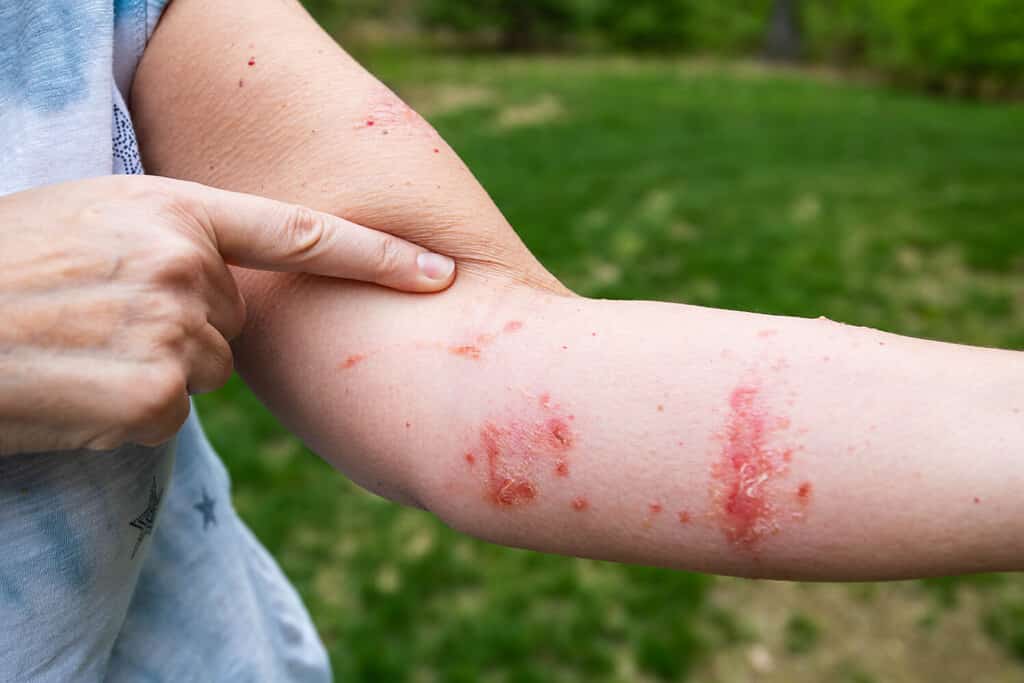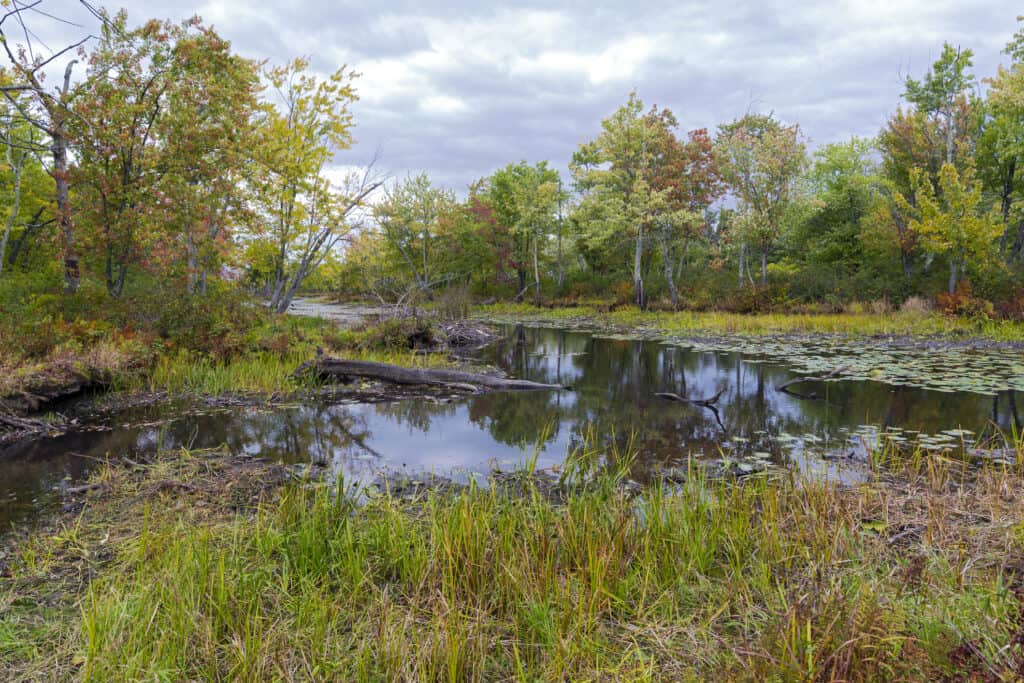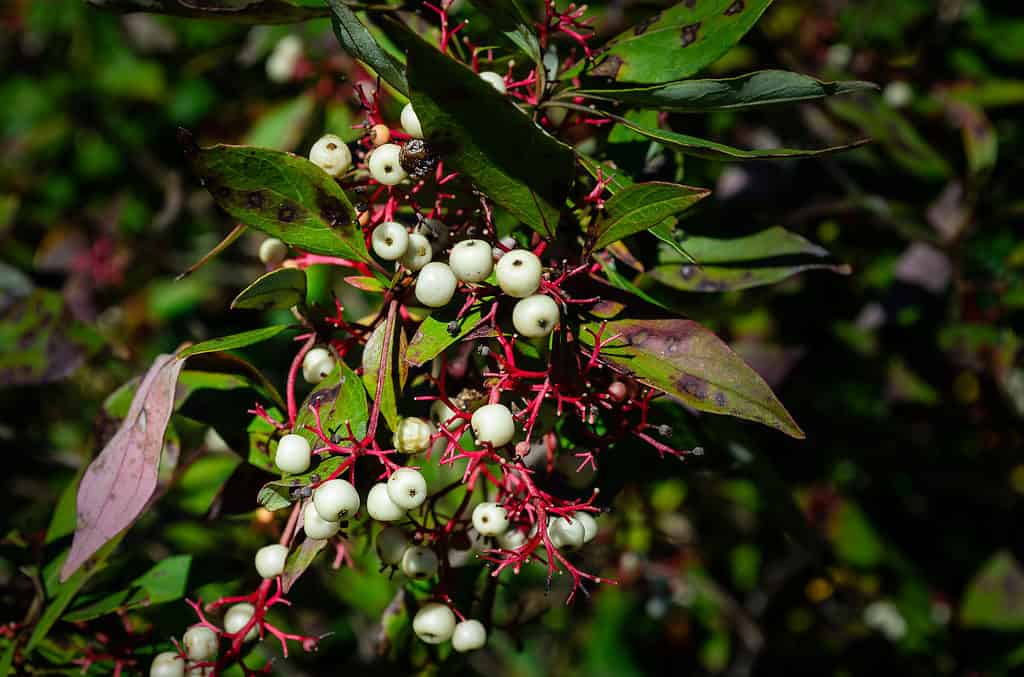If you live or travel in the United States and are an outdoor enthusiast, you may want to know where poison sumac commonly grows. Poison sumac, Toxicodendron vernix, is a poisonous shrub in North America. It is part of the cashew family, Anacardiaceae. Depending on your region, it could be referred to as thunderwood, poison-elder, swamp sumac, poison-dogwood, and poison-wood. Physical contact with poison sumac can cause itching, burning, blisters, and a rash. You can decrease your chances of encountering this toxic shrub by learning where it grows.
What Causes a Poison Sumac Rash?
Every part of the poison sumac plant contains urushiol — a resin that causes extreme irritation and blisters for people who touch the leaves, stems, or berries. Additionally, smoke from burning poison sumac is toxic, can cause respiratory difficulty, and in some cases, can be life-threatening. Among plants that can cause a rash in North America, poison sumac’s toxicity levels are very high. Interestingly, the plant and its fruit are not poisonous to birds and other wildlife.
Urushiol is challenging to avoid, as it resides not only in the stems and leaves but also in the sap and roots of plants like poison sumac, poison ivy, and poison oak. The oil is produced in the sap but comes to the surface as the plant grows, especially at any place where the plant is damaged. As the shrub matures, the sap slowly saturates every part of the plant. Plants in the family Anacardiaceae, like poison sumac, are responsible for the most cases of contact dermatitis in North America each year.

An estimated 85% of the population is sensitive to the resin found in poison sumac called urushiol.
©Michael Moloney/Shutterstock.com
Habitat
Knowing where poison sumac thrives can lower your risk of encountering its toxic oil. Unlike poison ivy and poison oak, poison sumac is relatively rare. Poison sumac needs a specific type of habitat. Here’s a look at the conditions that affect where poison sumac most commonly grows.
Elevation
At elevations greater than 4,000 feet (1,200 meters) above sea level, poison sumac has difficulty growing. Poison sumac does not grow well in mountains or highlands. Higher elevations have lower oxygen levels and tend to have dry and cold climates compared to lower elevations. Considering poison sumac’s preference for wet soil, it is unlikely that you would encounter it at heights greater than 5,000 feet above sea level.
Soil
Poison sumac grows well in damp soil, as it is a marsh and swamp plant. It thrives in extremely wet locations, standing water, and clay soil. The most densely inhabited locations of poison sumac include bogs, swamps, and marshes. It also grows along the shores of lakes, ponds, and slow-moving rivers.

Poison sumac thrives in the wet conditions found in marshes.
©iStock.com/jferrer
Climate
Poison sumac is a deciduous plant that goes dormant in the winter, which means it can survive in climates with cold seasons. Consequently, it grows in various weather conditions as long as the soil is damp year-round.
Poison sumac inhabits diverse climates from Canada to Florida, including tropical, subtropical, humid continental, temperate, and humid coastal. In general, poison sumac is not found in desert climates because they are too dry — except occasionally along permanent waterways and larger bodies of water.
Where Poison Sumac Grows
| Country | States/Provinces | Habitat |
|---|---|---|
| United States | Alabama, Connecticut, Delaware, Georgia, Illinois, Indiana, Kentucky, Louisiana, Maine, Maryland, Massachusetts, Michigan, Minnesota, Mississippi, New Hampshire, New Jersey, New York, North Carolina, Ohio, Pennsylvania, South Carolina, Tennessee, Texas, Vermont, Virginia, West Virginia, Wisconsin | Wetland areas, wooded swamps, sedge tussocks, peat bogs, standing water, unusually wet soil, and the shores of bodies of water. |
| Canada | Nova Scotia, Ontario, Quebec | Wetland areas, wooded swamps, peat bogs, sedge tussocks, marshes, standing water, and the edges of bodies of water. |
Identification
Poison sumac is a shrub but can grow as tall as a tree under the right conditions — up to 30 feet high. However, It typically grows as a medium-sized bush 4-9 feet tall. The plants do not grow in large groupings. You are more likely to find it growing as an individual shrub or tree.
Not all sumacs are poisonous. It can be challenging to differentiate between safe sumac and poison sumac. Some safe-to-touch sumac species commonly grow in sunny areas along roadsides, fields, and hillsides. Despite looking similar, poison sumac has characteristics that distinguish it from other sumacs. The following features help differentiate poison sumac from the safe varieties.

The white berries of the poison sumac plant help distinguish it from non-poisonous sumac.
©iStock.com/Grb
Identifying Features of Poison Sumac
- Red stems distinguish poison sumac from other non-poisonous relatives. The stems fade to a brownish gray as they mature, but the newer growth creates a bold contrast of red stems and bright green leaves.
- Leaves with seven to 13 leaflets grow in horizontal pairs along the stem. There is always an odd number of leaflets because the leaf has one final leaflet at its tip.
- Oval-shaped leaflets on the poison sumac have smooth edges and a pointed tip. Leaflets are hairless and have a distinguished line down the middle with veins radiating out toward the edges.
- Light yellow spring flowers on poison sumac plants turn into berries in the summer.
- Cream-colored berries that start greenish-yellow or slightly grey. The berries mature into their cream color in fall. Non-poisonous sumacs have red berries.
- Irregularly shaped berries that are tiny, not perfectly round, and grow toward the base of the leaf in clusters. The clusters become heavy and droop downwards.
- Leaves that change color in the fall — including yellow, orange, and red. Poison sumac loses its leaves in the fall and becomes bare in its dormant state.
Unless you have a property that borders a body of water or wetland, you most likely will not run into poison sumac unless you work outdoors in industries like agriculture and forestry or participate in activities like birdwatching, hiking, clearing land, and hunting. If you live in a region where poison sumac thrives, avoid going through vegetation with exposed skin, and protect yourself by wearing long sleeves and pants.
The photo featured at the top of this post is © iStock.com/Werner Meidinger
Thank you for reading! Have some feedback for us? Contact the AZ Animals editorial team.







